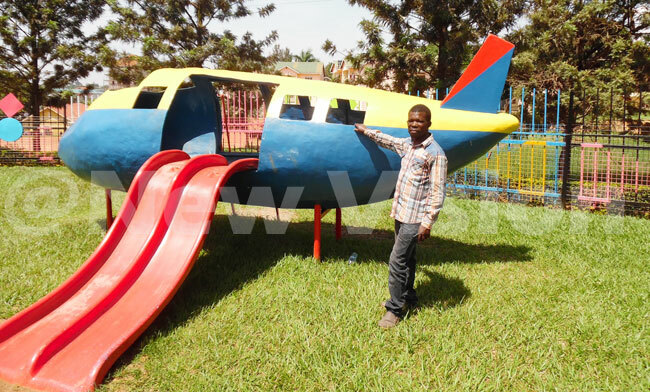Innovation: Sibyo's fibre glass playstations
Sibyo has constructed a house and pay School fees from the proceeds from his business
PIC: Permanent plane playstations go for as much as sh6m
INNOVATION | PLAYSTATIONS
Malla Sibyo, lives in a half-plastered house in Buto zone, in Bweyogerere, outside Kampala.
Born in Tororo district, the second last of six children, he went to Osiga primary school in Tororo, but due to financial problems, could not proceed to secondary school.
However, he never lost hope, but decided learn about carpentry in a friend's workshop. Because he was hard working, in around 1996 his friend took Sibyo to work with him with the company that was contracted to build the National Social Security Fund building which is located in Kampala road.
"That job helped me to gain extra knowledge in painting and designing." he says. "I decided to go for a two weeks course, where I paid sh100,000 at Lugogo Vocational Institute and then I joined Eastern Builders and Engineers. I got the opportunity to work with them in different construction projuects, such as in Kalagala health centre in Luwero, Amuria health centre and Mbarara University."
Over time, he decided to concentrate on his art work in 2013, and to be unique from other artists, he specialised in using fiberglass to design different objects. One of the products which is popular is a model of an aeroplane which can be placed in children's play parks.
"The idea came in to my mind, after seeing that children are fans of aeroplanes and I love to make children happy," Sibyo says.
He was broke, but approached an administrator at Naaya Hillside Primary School, in order to get some financial assistance by way of making one for the school. Thankfully the administration advanced sh3m, which acted as his start capital.
"The first toy plane model I made was so colorful and the children and the administrator liked it. This boosted me and I went on to make more planes for different schools," he adds.

How he makes them
The first thing he does is to make a template with the correct measurements from wire mesh or clay soil, especially when he plans to make more than one model plane. The templates are measured so that a seven-year-old child can stand inside the final product while playing.
The next step is to mix resin, fiber glass material and add hardener to the mixture. "I put the mixture on the mold and wait for about 10 minutes for the chemical reaction to take place, then I apply colourful paints on top," Sibyo explains. He imports the materials from Kenya.
Sibyo says that though his plane models seem to look alike, he makes some that can be fixed permanently on the ground and a type which can be affixed on concrete and can be easily transferred from place to place. The permanent one costs sh6m, while the moveable is sh4.5m.
Some planes have open and tunnel slides for children to slide through and have fun. Those without slides can be fixed using concrete materials in such a way that they can rotate with the children inside as they play.
With his earnings since 2013, Sibyo says he has constructed a house and pay children's school fees without inconvenience. He also mentors art students at Kyambogo university and is paid for it.
He only wishes he could have more capital and a bigger work space. He also decries the cost of the materials, which reflects on the cost of his finished product, a fact that prospective customers complain about.
But he believes he will get there. "After five years, I to employ more than 50 people to work in my workshop. My most important vision is to sell my art work internationally" Sibyo said.